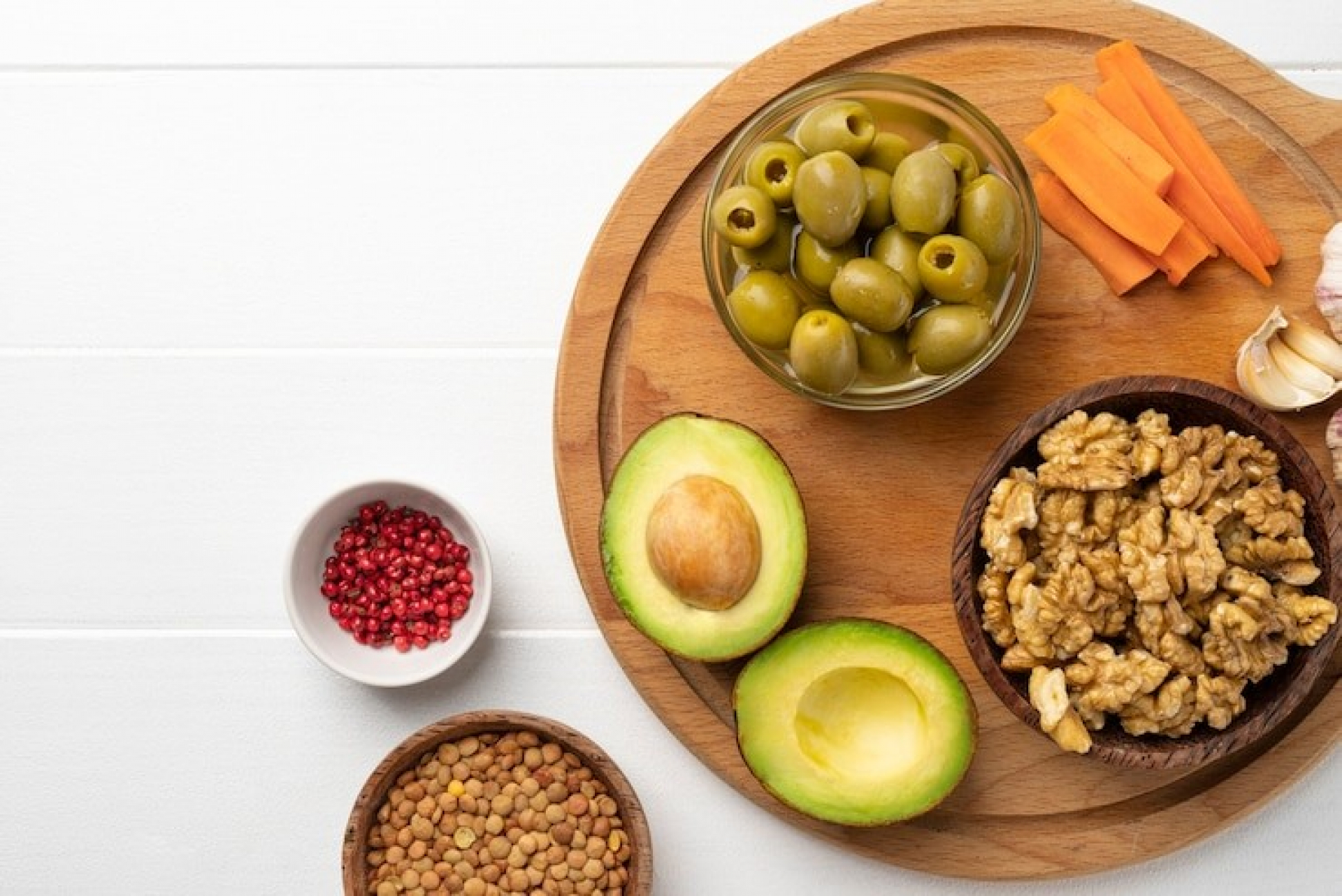Why snacking matters in blood sugar control? Eating between meals isn’t just about curbing hunger. For people managing diabetes or glucose sensitivity, snacks serve a more important purpose, keeping blood sugar levels steady throughout the day.
Blood sugar tends to dip between meals, especially during long gaps or after physical activity. These dips can trigger cravings or hypoglycemia. However, the wrong type of snack, like sugary drinks or refined carbs, can cause sharp glucose spikes that eventually crash, leading to fatigue, hunger, and long-term complications.
This is where eating smart with glucose monitoring tools becomes essential. CGMs (Continuous Glucose Monitors) let you track how every bite affects your body, helping you adjust in real time.
For example, if you notice a sharp rise after a banana smoothie, you can replace it with a boiled egg and fruit combo that has a gentler glucose curve. Snacking is no longer about assumptions, it is about data.
What Are Personalized Blood Sugar Insights?
Personalized blood sugar insights are data points generated by CGMs and lab diagnostics that reveal how your body reacts to different foods, sleep, stress, and exercise. These tools eliminate guesswork from diabetes management.
Here is how it works:
- CGMs measure your glucose every few minutes.
- You can log meals, snacks, activity, and stress levels.
- Over a few days or weeks, you will notice patterns, certain foods may cause a spike while others remain stable.
Unlike generic diet plans, these insights are unique to you. They empower you to:
- Create a snack list that would not disrupt your glucose curve.
- Adjust portion sizes for better stability.
- Know the best timing for snacks based on your daily glucose trends.
Some CGM platforms also provide AI-based reports summarizing your best and worst glucose events, offering true personalization.
Smart Diabetes Diagnostics- The Foundation of Better Snacking
Beyond CGMs, smart diabetes diagnostics include lab tests that offer deeper insights:
- HbA1c (average glucose over 3 months)
- Fasting Blood Glucose
- Oral Glucose Tolerance Test (OGTT)
- Insulin Resistance Index (like HOMA-IR)
These diagnostics help identify whether you are:
- In a prediabetic state
- Experiencing high post-meal spikes
- Struggling with insulin sensitivity
With this information, healthcare providers can recommend snack options tailored to your glucose tolerance. For instance, someone with insulin resistance may be advised to avoid high-GI fruits even in small quantities, while another person may tolerate them well.
Smart diabetes diagnostics form the foundation of preventive nutrition, allowing you to use food as medicine.
10 Best Snacks for CGM Users (and Anyone Watching Their Sugar)
Here are CGM-friendly, nutrient-rich snacks proven to cause minimal blood sugar fluctuations. These can be rotated weekly and adjusted based on CGM feedback.
1. Boiled Eggs with Black Pepper
- High in protein and virtually no carbs.
- Keeps you full and stable for hours.
2. Almonds and Walnuts (Unsalted)
- Rich in healthy fats, fiber, and magnesium.
- Shown to reduce post-meal glucose spikes.
- A handful (10-15 nuts) is ideal.
3. Apple Slices with Natural Peanut Butter
- Fiber from the apple + fat from peanut butter = stable sugar.
- Choose unsweetened nut butter.
4. Unsweetened Greek Yogurt
- Excellent protein source; add chia seeds or flaxseed for fiber.
- Avoid flavored versions with added sugar.
5. Roasted Chickpeas
- Crunchy, protein-rich, and slow-digesting.
- Season with herbs instead of salt.
6. Carrot and Cucumber Sticks with Hummus
- Low GI veggies plus protein-rich dip.
- Great for pre-dinner cravings.
7. Chia Seed Pudding
- Packed with omega-3s and fiber.
- Use unsweetened almond milk and refrigerate overnight.
8. Homemade Popcorn (Air-popped, no sugar/butter)
- Whole grain, low calorie, and satisfies cravings.
- Sprinkle nutritional yeast for flavor.
9. Cottage Cheese with Flaxseeds
- Combines protein with fiber and omega fats.
- Can be eaten as a savory or sweet snack.
10. Avocado on Multigrain Toast
- Healthy fats + complex carbs = great glucose profile.
- Add pumpkin seeds or a boiled egg on top for extra nutrition.
Eating Smart with Glucose Monitoring Tools
Snacking becomes science when you use glucose monitoring tools the right way. Here is how to optimize your experience:
- Check your glucose before and 1 hour after snacking.
- Record changes in a food journal or CGM app.
- Notice which snacks raise glucose by <30 mg/dL.
- Avoid repeating snacks that cause spikes >40 mg/dL.
Many CGM apps also color-code trends (green = stable, red = spike). Use this to plan snacks that keep you in the green zone.
The goal isn’t perfection but pattern recognition. What keeps your neighbor’s sugar stable may spike yours. Let data lead the way.
What to Avoid? Snacks That Spike Blood Sugar
While healthy snacking can be therapeutic, some options should be approached with caution:
High-Risk Snacks:
- Sugary Beverages: Soda, sweetened coffee, packaged juices.
- Refined Flour Snacks: Crackers, white toast, pastries.
- Commercial Granola Bars: Often high in hidden sugars and syrups.
- "Fat-Free" Processed Foods: Typically high in carbs to compensate for flavor.
- Fruit Smoothies: Especially store-bought ones with added sugars.
Watch your CGM trend line, if it climbs steeply after one of these, it is likely not worth the indulgence.
When Should You Snack?
Snacking isn’t just about what but also when. Proper timing can improve glucose control and reduce cravings.
Best Snack Times:
- Mid-Morning (10:00 – 11:00 AM): Prevents low sugar and binge eating at lunch.
- Mid-Afternoon (3:00 – 4:00 PM): Keeps energy stable until dinner.
- Before Bed (If needed): Choose protein/fat over carbs to prevent overnight dips.
Avoid mindless snacking late at night or during long screen time sessions. Always eat with intention and awareness.
How to Build Your Personal Snack List?
Start by experimenting with a few suggested snacks. Track your CGM readings before and 1-2 hours after. Make note of:
- Spike levels
- Satiety (how long you stayed full)
- Craving control
After a week, you will notice patterns. Maybe your body loves boiled eggs but reacts poorly to popcorn. That is your bio-individuality at work.
Use these insights to:
- Create a top 5 snack rotation
- Adjust for days with higher activity or stress
- Discuss findings with your nutritionist or doctor
Free tools like snack log templates or apps can make this process smoother.
FAQs: Your Snacking Questions Answered
Q1. What are the healthiest snacks for people with diabetes?
High-protein, low-GI snacks like eggs, nuts, yogurt, and hummus help maintain stable blood sugar.
Q2. Can snacks cause high blood sugar even with CGM use?
Yes. CGMs help track impact, but wrong choices still lead to spikes. Use CGMs to avoid repeat offenders.
Q3. How do CGM users know if a snack is right for them?
If your glucose rises <30 mg/dL post-snack, it’s considered well-tolerated.
Q4. Are fruits okay as snacks?
Yes, but prefer low-GI fruits like berries, apples, or pears. Always pair with fat or protein.
Q5. What is the best time to snack to avoid sugar dips?
Mid-morning or mid-afternoon are ideal. Avoid large bedtime snacks unless advised.


